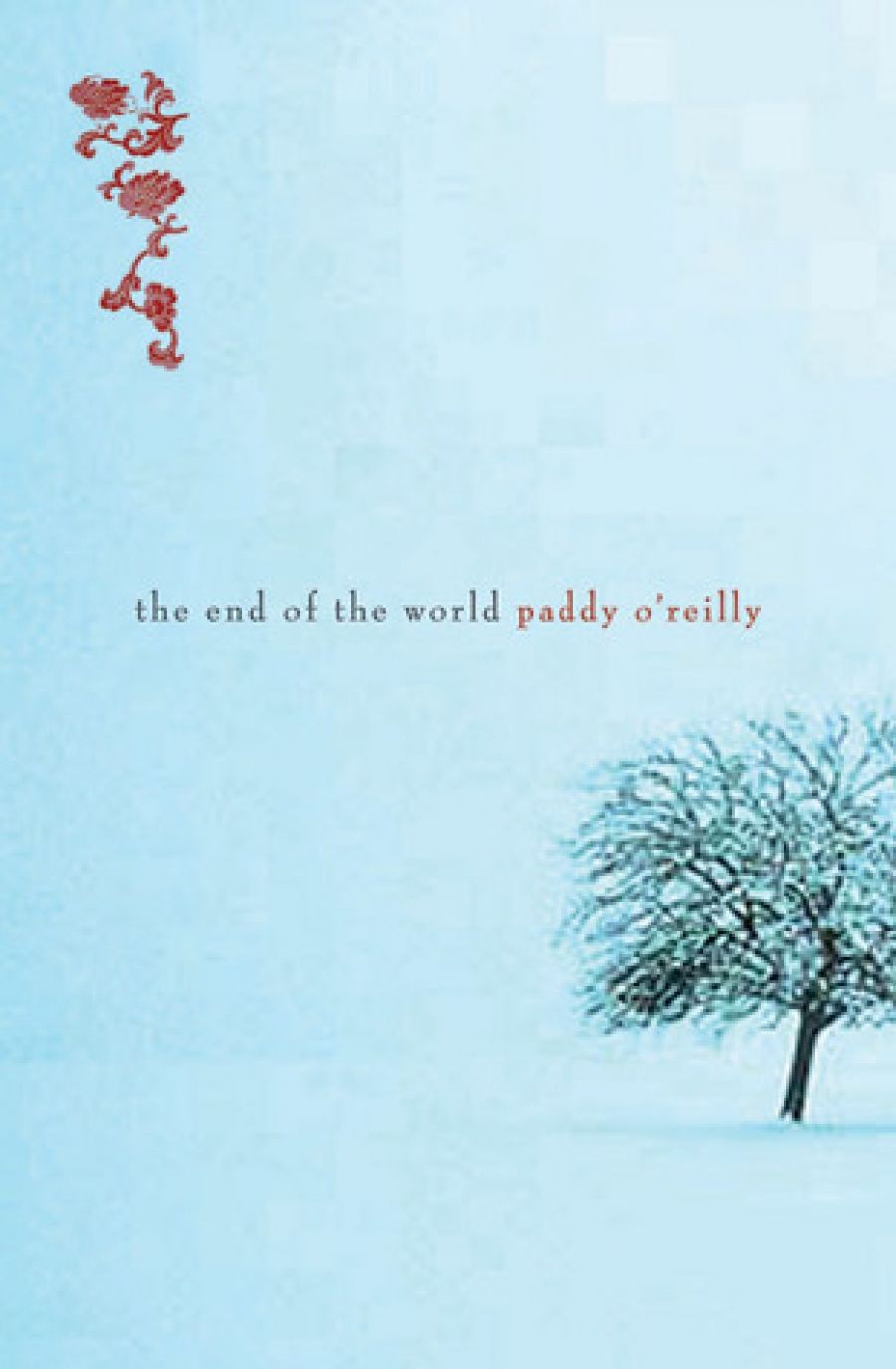
- Free Article: No
- Contents Category: Poetry
- Review Article: Yes
- Online Only: No
- Custom Highlight Text:
In 2005, Lisa Gorton, writing in ABR, named Paddy O’Reilly’s The Factory one of the best books of the year. It was O’Reilly’s first novel, but she was already well established as a prize-winning writer of short stories. The End of the World is a collection of those stories, and should secure her reputation as one of our most interesting, if not best-known, literary talents.
- Book 1 Title: The End Of The World
- Book 1 Biblio: UQP, $23.95 pb, 240 pp
- Book 1 Readings Link: booktopia.kh4ffx.net/Ke03eN
Many of her characters spin stories of their own lives. Some know they are fooling nobody, some hope to get away with it, and some begin to believe their own lies. In ‘Where We Come From’, a widow tells so many stories about her dead husband that her daughter gives up guessing which ones are true. The mother forgets that this is her daughter’s real life: ‘she seems unaware that a story can do more than make people laugh or gasp.’ Some lies are self-destructive (a woman and her abusive partner collude to keep his violence secret); others are fantasies, providing a little hope in otherwise disappointing lives. A young woman dreams of India, dismissing the ambivalent reports of a friend who has really been there: ‘She’s ill – of course she’s unhappy … Things will change in the next letter. She’ll describe the food and the street stalls and the pedlars who tell her stories. She’ll make me want to be there.’ The book teems with parents, children, siblings, friends and lovers, all tangled up in the stories they have told about themselves.
Nearly every story is in the first person, and O’Reilly uses this device to interesting effect. Her narrators do more than unwittingly act out her stories’ symbolism. They compose their own metaphors and interpret their own gestures, making for some funny, moving passages. In ‘Save Our School’, a harried single mother casts a wry eye over herself:
At the school gate the kids are both standing with their hands on their hips. I wonder if they got that from me. Old scrag standing with her hands on her hips … squinting into the sun. You could make a statue of that. It would look like half the women in this town. Dust and a few plastic bags swirling around the statue’s feet, the tail-lights of the husband’s car receding into the distance. They should cast it in bronze and put it in the foyer of Centrelink.
In ‘Inheritance’, a family strikes a futile dramatic pose:
When I turned fourteen, I started smoking cigarettes. Every night my mother and my brother and I sat in separate rooms and sucked the poison from the cigarettes with all our strength. Clouds of smoke rolled out of the windows on hot evenings … [We] were burning ourselves up, puffing until our chests ached, as if we wanted to self-immolate in a monstrous family gesture. The early morning hours were filled with our coughs and asthmatic wheezes.
Here and elsewhere, O’Reilly’s narrators seem as capable as the reader of spotting an ironic gesture or a recurring motif. There are layers of meaning to which they may not be privy, but the line between deliberate and unintended meaning can be tantalisingly difficult to spot.
In ‘Snapshots of Strangers’, for instance, a young woman remembers her father: ‘Over the years we watched him shrink as if he was evaporating. When I was angry I called him the Dry Man. Even his coffin was light, as if a crackly old stick lay inside.’ When he dies, nature helps out with an aptly watery illness: ‘We sat around him in upright chairs as his chest bubbled and snickered with the fluid trapped inside it. All that empty space inside him filled up with water and we watched him slowly drown.’ By story’s end, the narrator has decided to track down the man who ruined her father’s life. By quietly shifting the story’s imagery out of the narrator’s control, O’Reilly creates an intriguing ambiguity about the limits of the woman’s awareness, and about the story’s end. Throughout the book, we meet narrators who are similarly knowing but not all-knowing. For all their sharp, selfdeprecating humour, it is seldom clear whether they will see things clearly enough to choose in their own best interests.
The End of the World is not as remarkable as The Factory. Perhaps this reflects my own bias – a preference for novels – but I don’t think that this explains it. The Factory did a rare thing: it turned an ingenious intellectual premise into a complex, gripping, flesh-and-blood story. It was full of ideas about history, art, ego and community, but these all emerged seamlessly from the pacy main plot. The End of the World doesn’t achieve the same striking effect. As complaints go, however, this is a slight one. At worst, O’Reilly set a standard in her first book that she doesn’t quite match in her second. She is an observant, lucid, unpredictable writer, and she deserves to be more widely read.


Comments powered by CComment